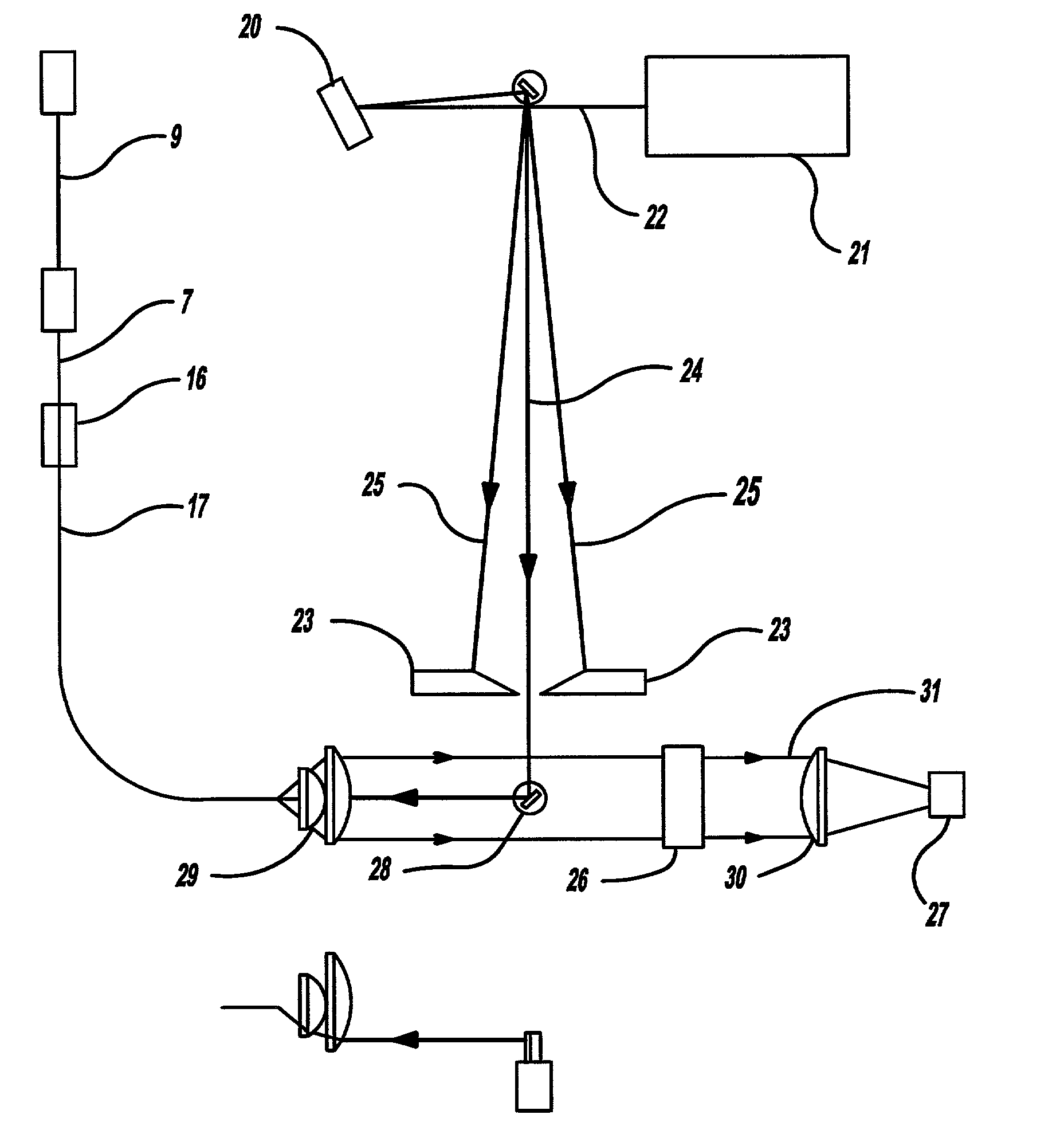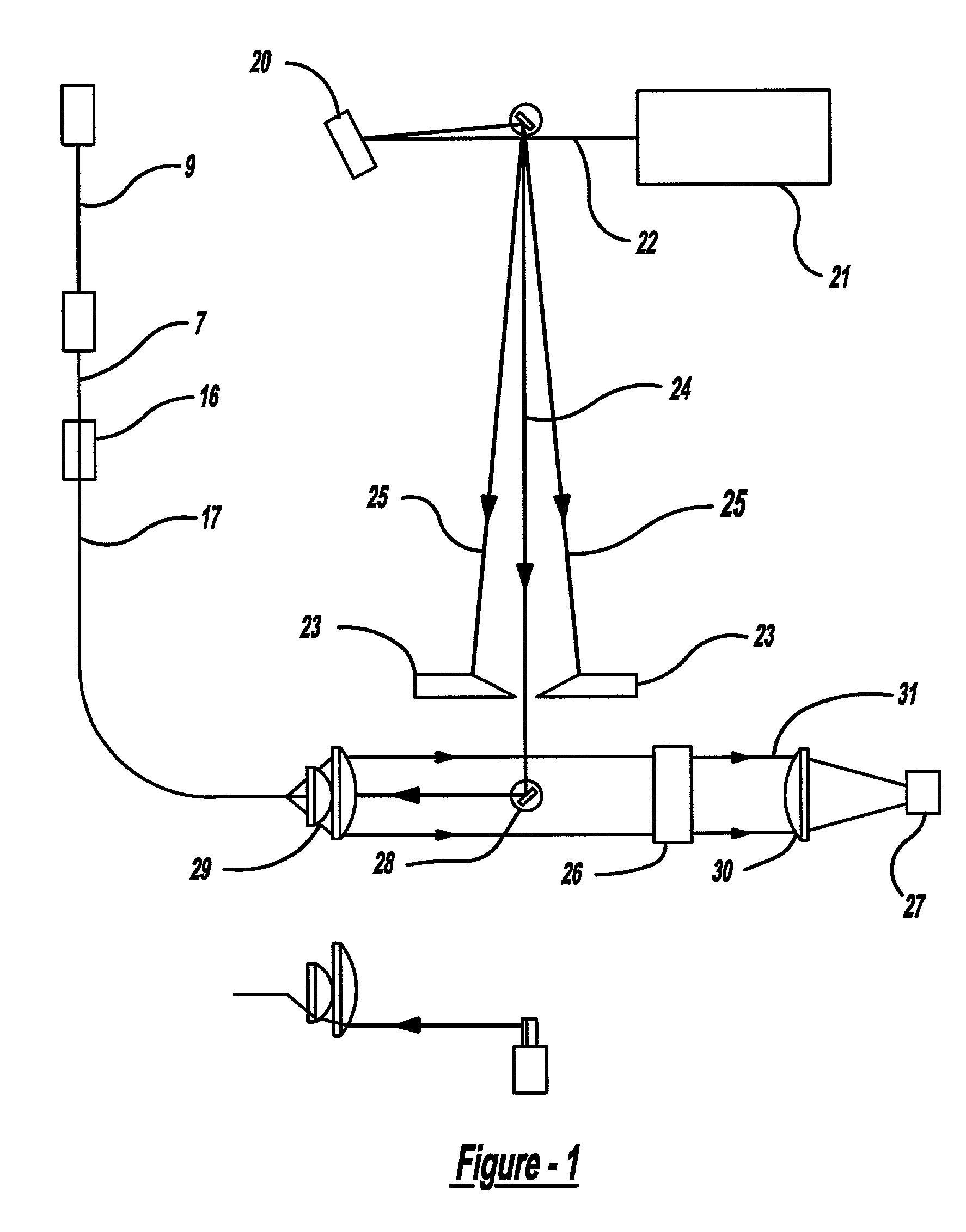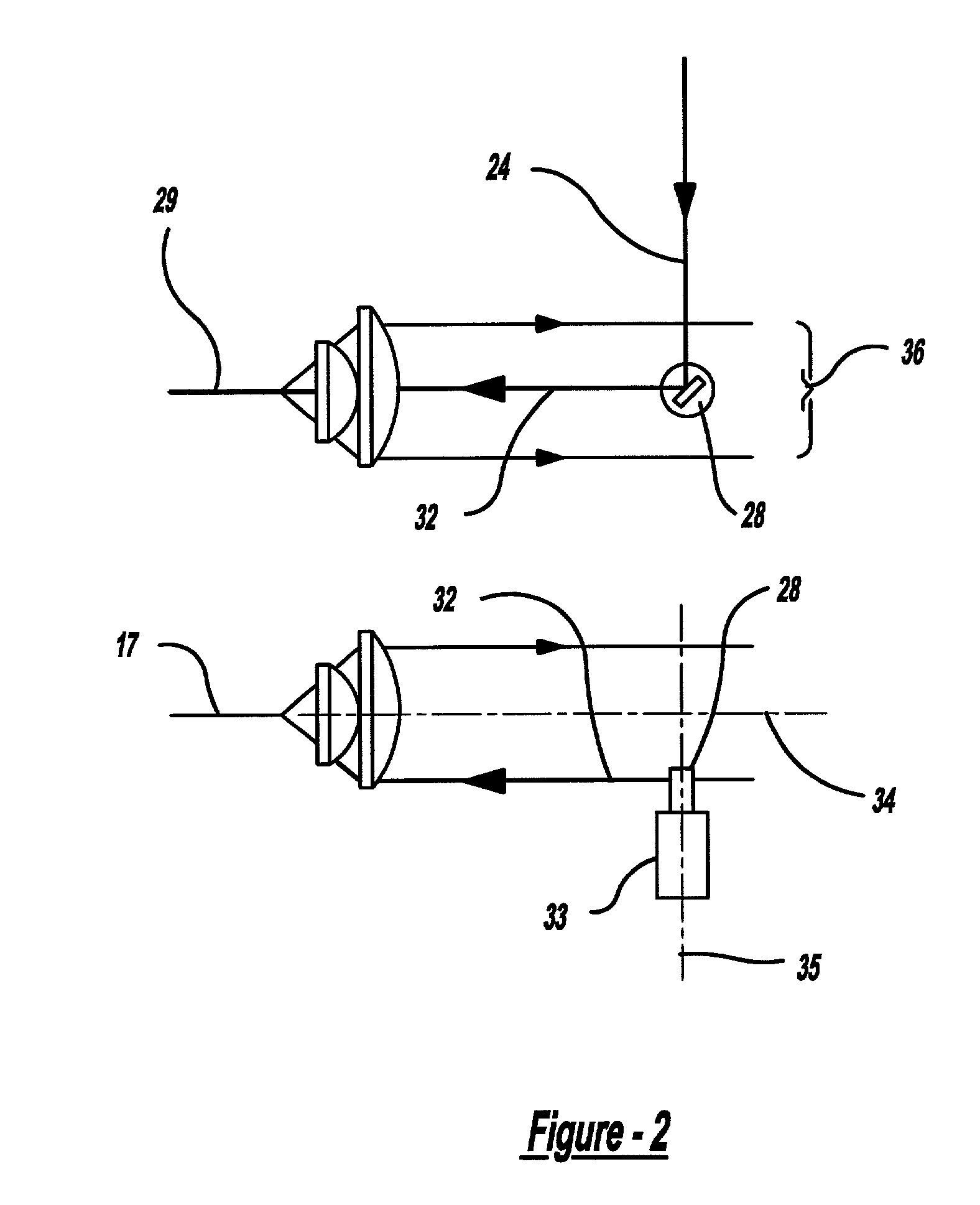Method and apparatus for measurement of the effect of test compounds on signal transduction at the level of biological receptors
a technology of biological receptors and test compounds, applied in the field of method and apparatus for measuring the effect of test compounds on signal transduction at the level of biological receptors, can solve the problems of inability to provide real time data, method time-consuming, and limited circumstances under which such measurements can be mad
- Summary
- Abstract
- Description
- Claims
- Application Information
AI Technical Summary
Benefits of technology
Problems solved by technology
Method used
Image
Examples
Embodiment Construction
[0058] General Apparatus and Methods of All Preferred Embodiments
[0059] Direct real time observation of binding between a certain nucleotide sequence and a certain biological receptor is not currently part of the prior art of molecular biology or biochemistry. Binding between such molecules in typically measured by radiobinding-assays requiring separation of bound from unbound components. The following general method is provided whereby an evanescent sensing fluorometry apparatus such as and without limitation, the one which has been described in FIGS. 1-6, may be used to provide direct real time observation of binding between a certain nucleotide sequence and a certain biological receptor.
[0060] Although all specific examples of preferred embodiments of the present inventions utilized evanescent fiber optic sensors of the type described in FIGS. 1-6, it is easy to visualize the possibility that the applications described in the objects of the present invention could be carried out ...
PUM
| Property | Measurement | Unit |
|---|---|---|
| Biological properties | aaaaa | aaaaa |
| Dissociation | aaaaa | aaaaa |
| Fluorescence | aaaaa | aaaaa |
Abstract
Description
Claims
Application Information
 Login to View More
Login to View More - R&D
- Intellectual Property
- Life Sciences
- Materials
- Tech Scout
- Unparalleled Data Quality
- Higher Quality Content
- 60% Fewer Hallucinations
Browse by: Latest US Patents, China's latest patents, Technical Efficacy Thesaurus, Application Domain, Technology Topic, Popular Technical Reports.
© 2025 PatSnap. All rights reserved.Legal|Privacy policy|Modern Slavery Act Transparency Statement|Sitemap|About US| Contact US: help@patsnap.com



